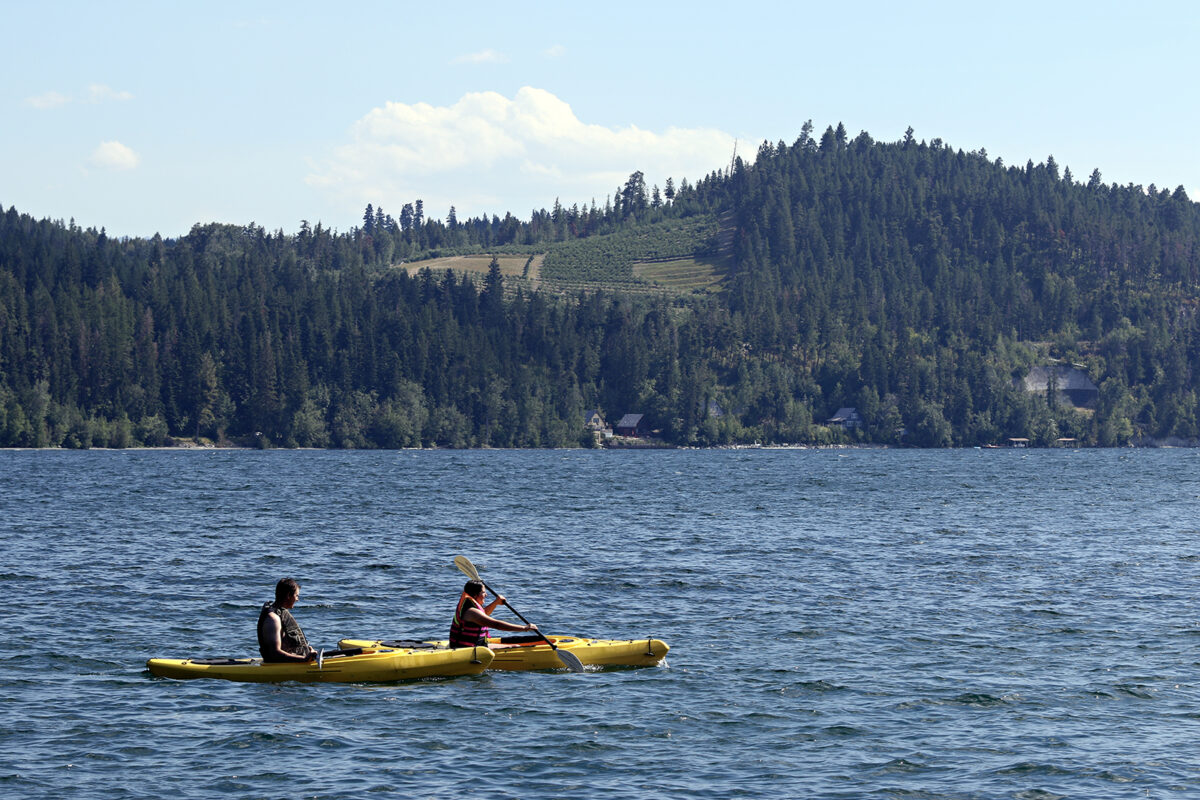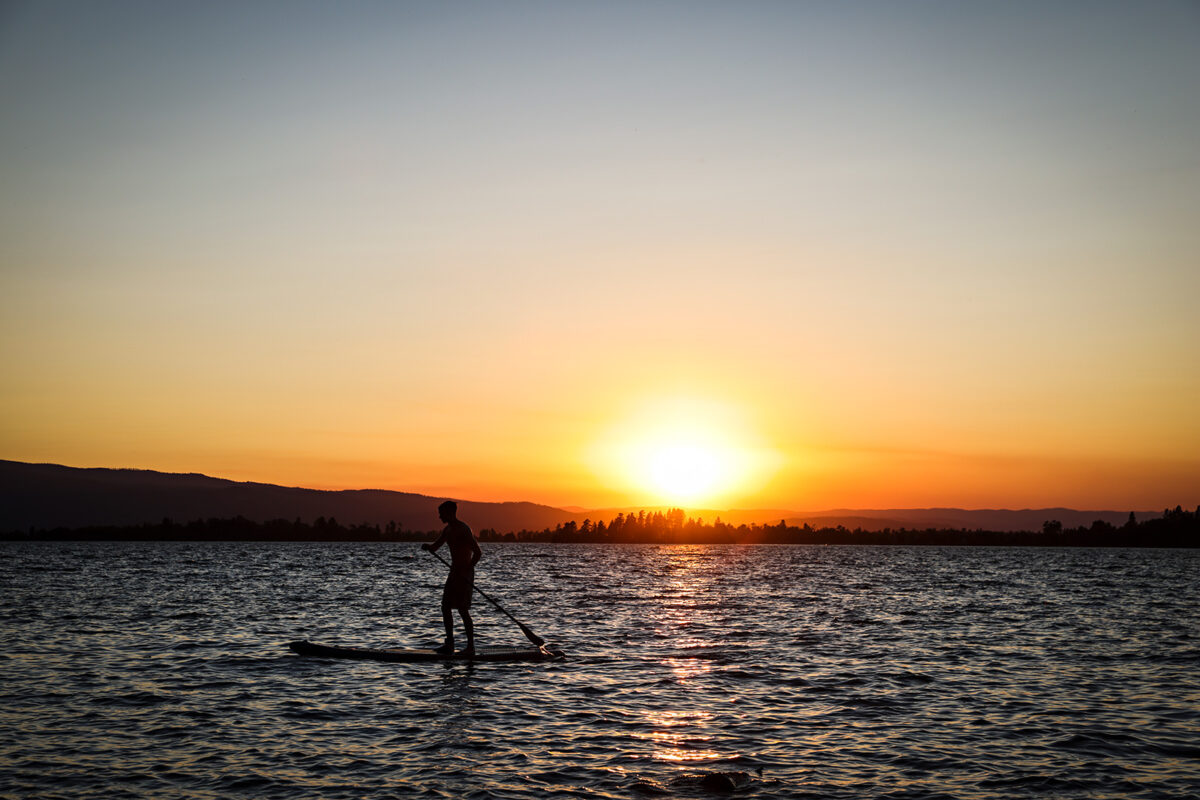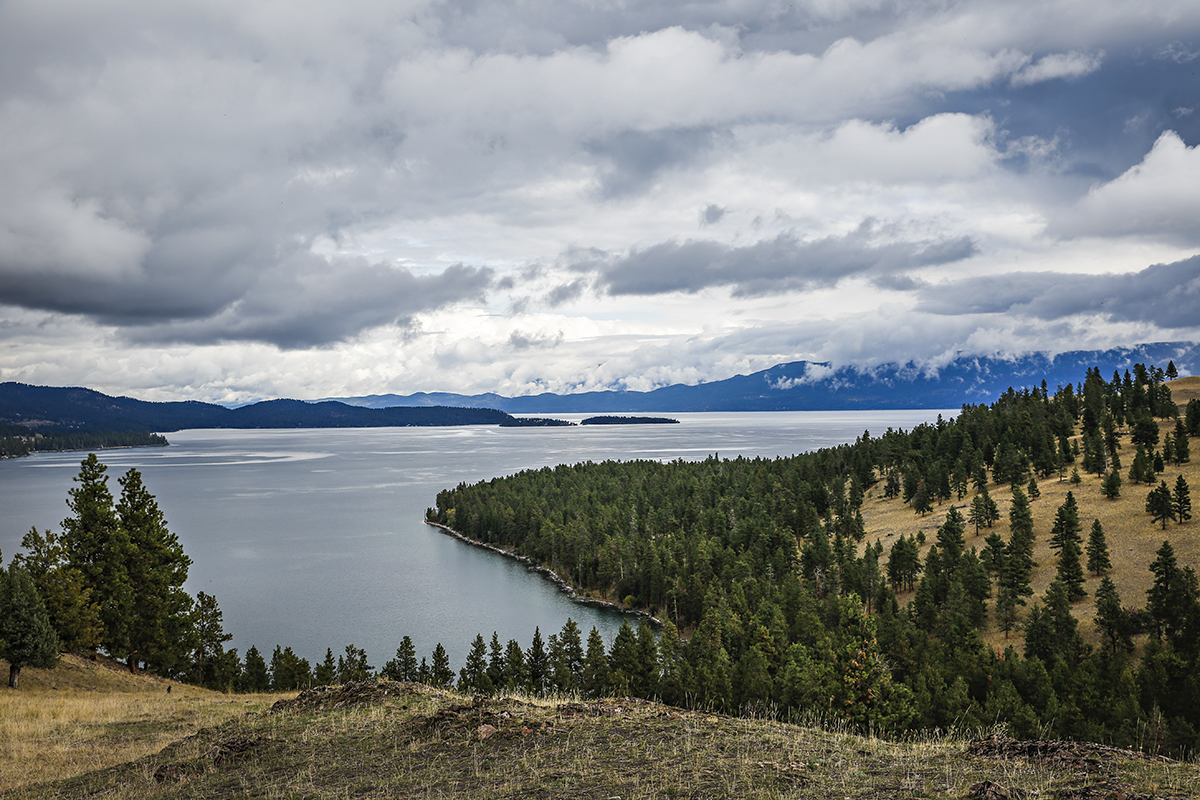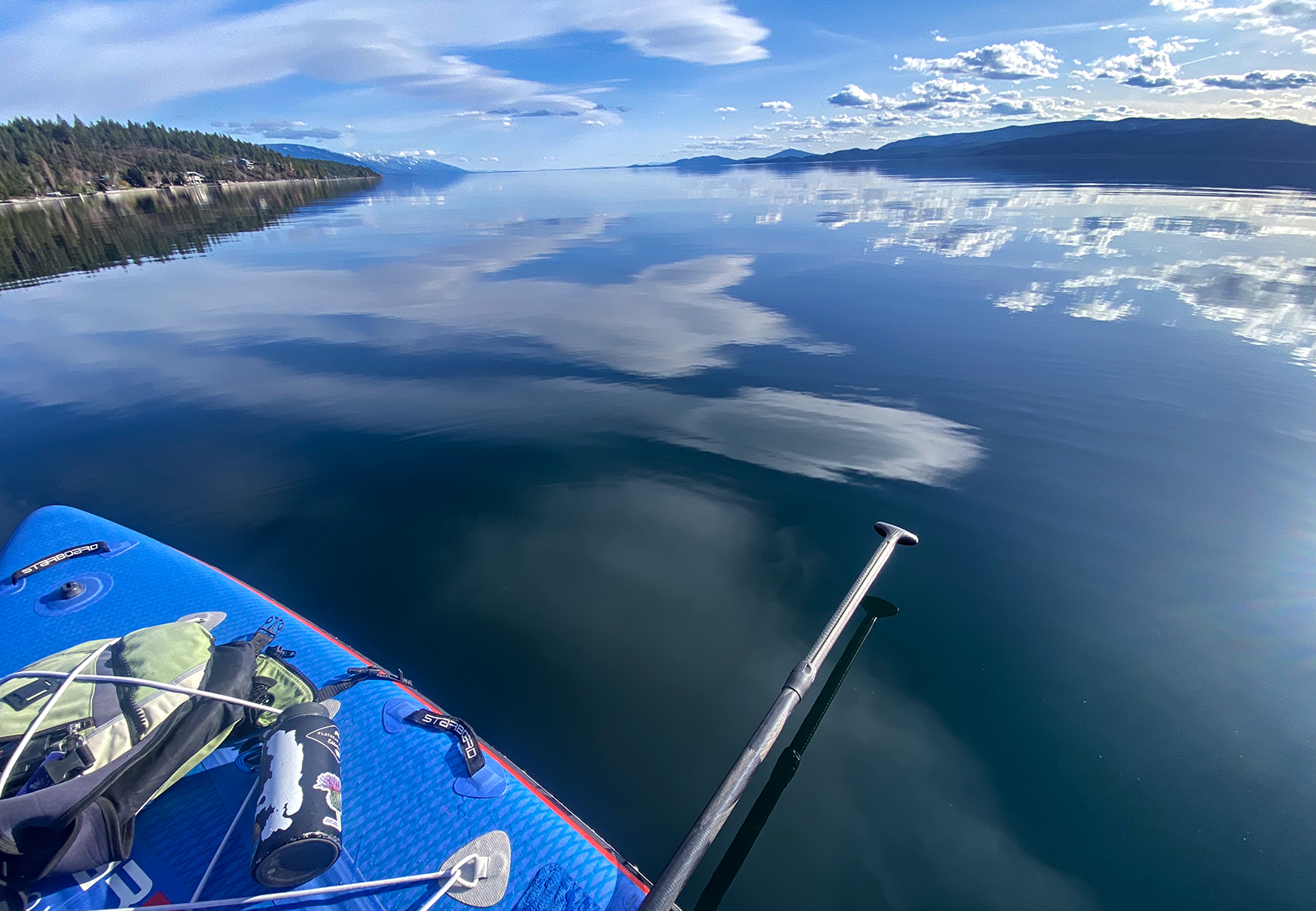At 191 square miles, Flathead Lake is the largest natural body of freshwater in the western United States outside of Alaska. A remnant of the ancient and exceedingly massive Lake Missoula, a dammed glacial lake that last drained at the terminus of the last Ice Age about 12,000 years ago, Flathead Lake’s waters remain clear, cold, and blue thanks to unsullied water sources from Glacier National Park and surrounding wilderness areas. The best way to experience the lake is via paddlecraft. While a vast number of paddling routes exist, here are five select excursions to appeal to a range of paddlers.
Yellow Bay State Park
1-3 miles
Yellow Bay is a relatively quiet stretch of water formed by a substantial peninsula offering some protection from the wind. Paddlers wishing to go farther can round the peninsula and absorb an expansive view of open water on a calm day. The clarity and color of the lake as a whole is renowned, but the golden rocks lining the bay’s bottom lend this spot an especially delightful spectrum of hues. The water is accessible via Yellow Bay State Park, located on the east side of the lake. The bay is also home to the Flathead Lake Biological Station, one of the oldest active biological stations in the United States. In July or August, be sure to stop at one of the numerous cherry orchards lining Highway 35 on your way out for a juicy post-paddle treat.

Wayfarers State Park
1-3 miles
Wayfarers State Park takes the prize for best sunset viewing spot on the lake, from on the water or from a series of rocky outcrops that form the park’s lakeshore. Located in Bigfork, with restaurants and refreshments close by, this area can sometimes get congested. Be mindful of motorboat traffic and their wakes. Novice paddlers take note: angle directly into or away from (perpendicular to) oncoming waves. A broadside wave is more likely to capsize a paddlecraft.

Wild Horse Island
10 miles
Wild Horse Island is truly unique among Montana’s varied landscapes. Interspersed among its rolling hills of prairie grasslands and stout stands of ponderosa pines are deer, bighorn sheep and, as its name suggests, a small herd of wild horses. The 2,160-acre land mass rises 1,200 feet above the lake, offering superb views of the southern half of the lake and affording paddlers ample opportunities to stretch their legs with a hike to the top. Embark from Big Arm State Park and make for Skeeko Bay in the island’s northwest quadrant, which features a welcoming gravel beach and access to the island’s main trailhead.

Somers Beach and Invitation Island
1-3 miles
Shallow waters extend hundreds of feet from the north shore of Flathead Lake, making it a primo spot for families with young children. Somers Beach State Park, the lake’s newest public access, is the main gateway to this mesmerizing stretch of shoreline. Just offshore is a small, rocky island that serves as a great tanning spot, with some outcrops over deep water also make it a good spot for diving. Birdwatchers will be delighted by the variety of avifauna, but note the annual closure from March 1 to July 15 of the wildlife management area adjacent to the state park. The closure minimizes disturbances to nesting birds in the wetlands.

The Great Paddle – Polson to Somers
30 miles
This expedition crosses the full length of the lake and is reserved for seasoned paddlers with the requisite stamina. Unless the wind gods are smiling, this route is best split over two to three days utilizing campgrounds at the six state parks dotting the lake’s edges. The prevailing winds are from the south and west, so in most cases beginning in Polson increases chances of success. To save weight and space on your paddlecraft, a hammock is a great alternative to a tent in the height of summer. Distances between the parks are wide and reservations fill rapidly, so plan accordingly.

Critical Notes on Safety
Flathead Lake, like any large, cold body of water, can transform from dreamy to potentially deadly in moments. Always check the forecast before going out and pay special attention to wind speeds and direction. A strong breeze can rile the lake’s surface into boat-flipping waves within minutes. On exceptionally windy days, waves are known to reach heights of six to eight feet.
A wetsuit is indispensable on chilly days, especially outside the months of July, August and September. Hypothermia is a real risk, even in the summer months. Life jackets are a must.
If on a paddle board, always wear an ankle or hip leash to prevent separation from your board. Even a light wind can push an unladen board away faster than most can swim. Use carabiners to clip essentials to the webbing on a board to prevent items from ending up on the bottom of the lake. Pack a fully charged cell phone and/or satellite communicator in a dry box or drybag if paddling a considerable distance, as well as little more food and water than you think you might need.
